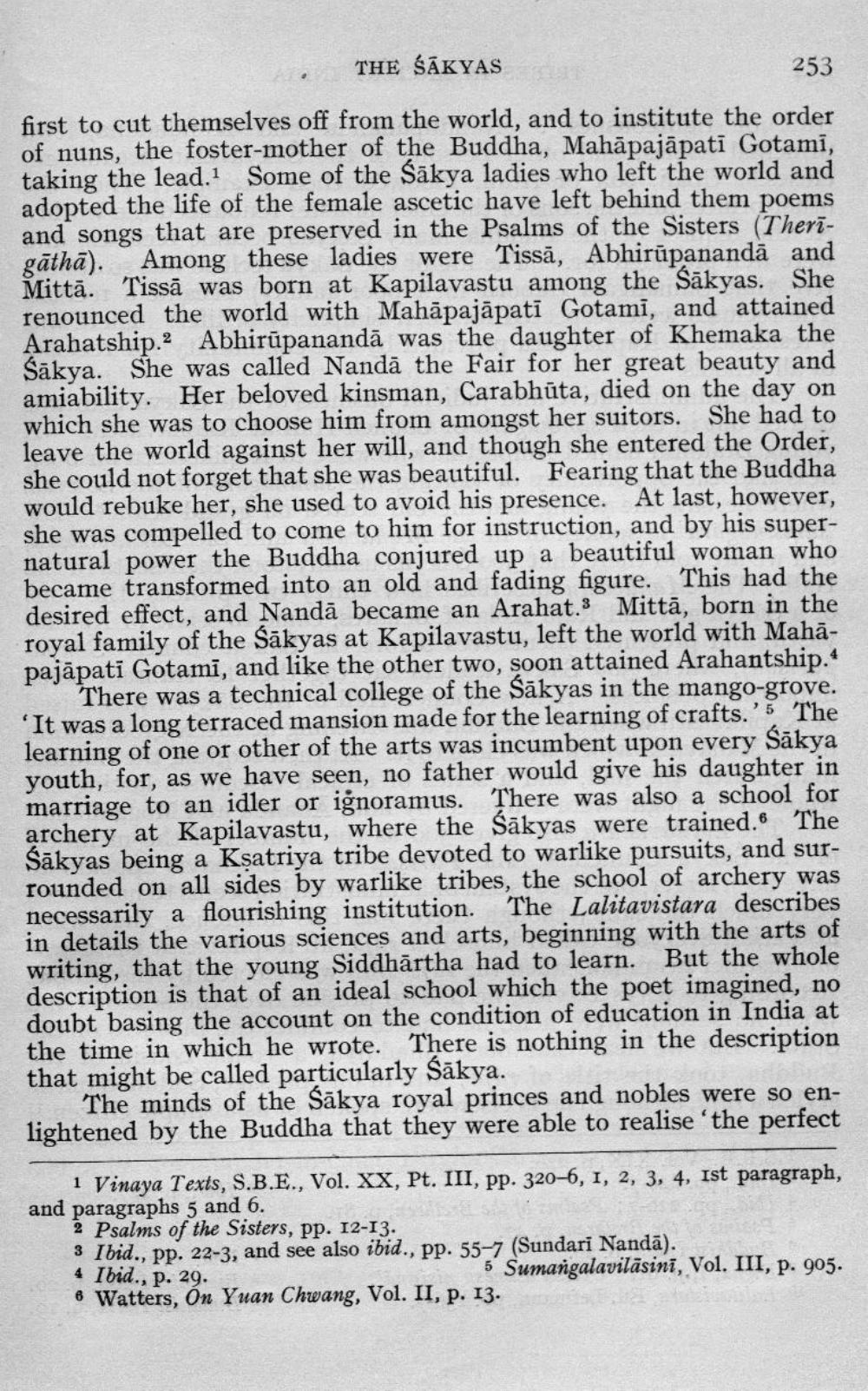________________
THE ŚĀKYAS
253 first to cut themselves off from the world, and to institute the order of nuns, the foster-mother of the Buddha, Mahāpajāpatī Gotami, taking the lead. Some of the Sākya ladies who left the world and adopted the life of the female ascetic have left behind them poems and songs that are preserved in the Psalms of the Sisters (Therīgāthā). Among these ladies were Tissā, Abhirūpananda and Mittā. Tissā was born at Kapilavastu among the Sākyas. She renounced the world with Mahāpajāpati Gotami, and attained Arahatship.2 Abhirūpanandā was the daughter of Khemaka the Sākya. She was called Nandā the Fair for her great beauty and amiability. Her beloved kinsman, Carabhūta, died on the day on which she was to choose him from amongst her suitors. She had to leave the world against her will, and though she entered the Order, she could not forget that she was beautiful. Fearing that the Buddha would rebuke her, she used to avoid his presence. At last, however, she was compelled to come to him for instruction, and by his supernatural power the Buddha conjured up a beautiful woman who became transformed into an old and fading figure. This had the desired effect, and Nandā became an Arahat.3 Mittā, born in the royal family of the Sākyas at Kapilavastu, left the world with Mahāpajāpati Gotamī, and like the other two, soon attained Arahantship.4
There was a technical college of the Sākyas in the mango-grove. 'It was a long terraced mansion made for the learning of crafts.'5 The learning of one or other of the arts was incumbent upon every Sākya youth, for, as we have seen, no father would give his daughter in marriage to an idler or ignoramus. There was also a school for archery at Kapilavastu, where the Sākyas were trained. The Śākyas being a Ksatriya tribe devoted to warlike pursuits, and surrounded on all sides by warlike tribes, the school of archery was necessarily a flourishing institution. The Lalitavistara describes in details the various sciences and arts, beginning with the arts of writing, that the young Siddhārtha had to learn. But the whole description is that of an ideal school which the poet imagined, no doubt basing the account on the condition of education in India at the time in which he wrote. There is nothing in the description that might be called particularly Sākya.
The minds of the Sākya royal princes and nobles were so enlightened by the Buddha that they were able to realise the perfect
1 Vinaya Texts, S.B.E., Vol. XX, Pt. III, pp. 320-6, 1, 2, 3, 4, ist paragraph, and paragraphs 5 and 6.
2 Psalms of the Sisters, pp. 12-13. 3 Ibid., pp. 22-3, and see also ibid., pp. 55-7 (Sundari Nandā). 4 Ibid., p. 29.
5 Sumangalavilāsinī, Vol. III, p. 905. 8 Watters, On Yuan Chwang, Vol. II, p. 13.




